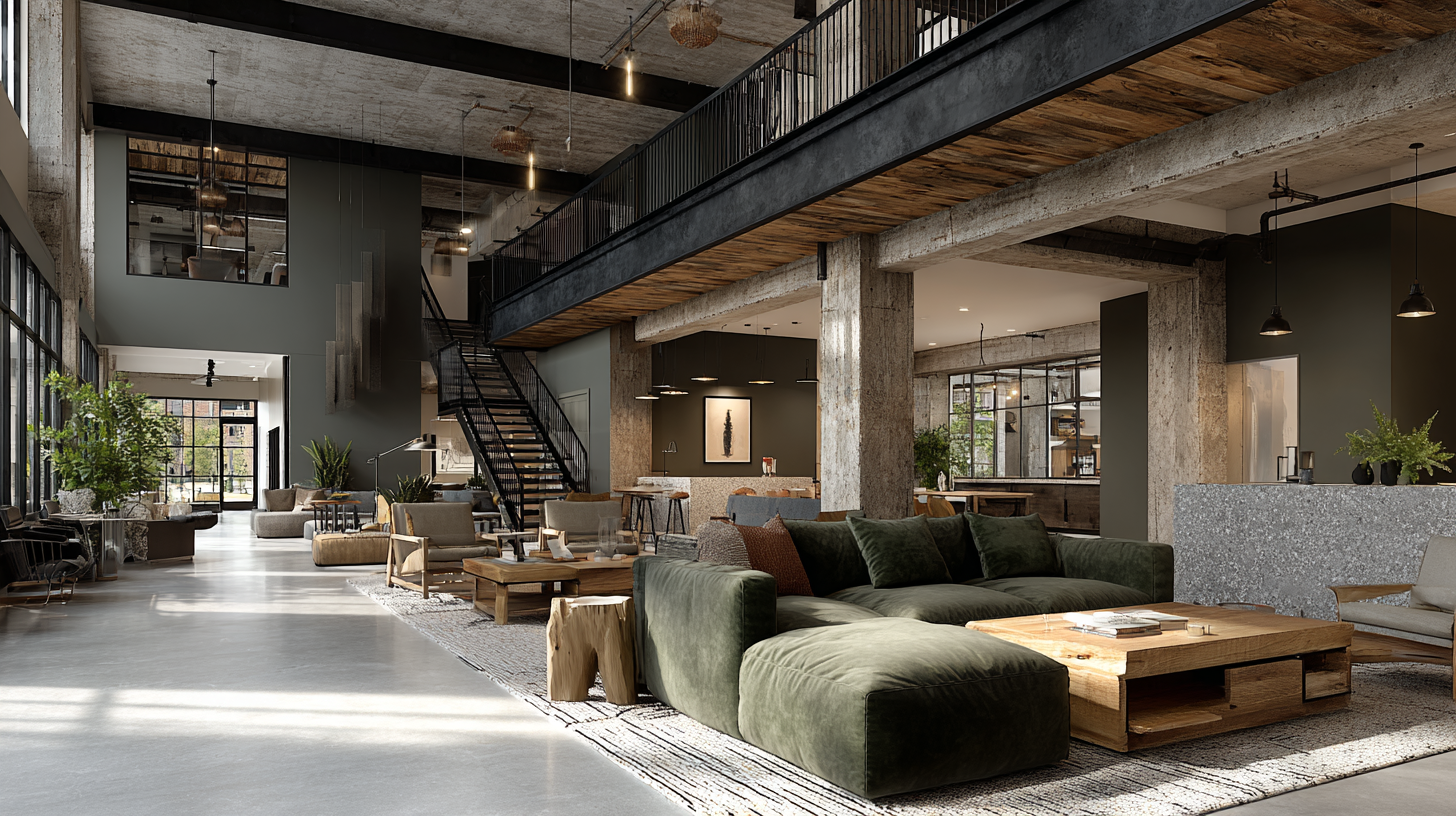How to Make Old Spaces New Again:
Adaptive Reuse in Design
Investors and developers want two things right now: resilient returns and places people want to be. Adaptive reuse—transforming underutilized or historic buildings into vibrant destinations—delivers both. At DESIGNBAR, we see adaptive reuse as more than a cost play; it’s a strategic way to honor the past while designing for today’s hospitality, wellness, and experience-driven expectations.
Why Adaptive Reuse Makes Business Sense
Adaptive reuse can compress timelines and reduce upfront costs compared to ground-up development—and it often outperforms “me too” new builds because character is a moat. CBRE’s 2022 analysis notes that repositioned assets frequently outperform peers thanks to unique identity and lower embodied carbon. Reusing structures also aligns with ESG goals by minimizing waste and reducing embodied emissions—an increasingly material factor for capital partners.
Warehouse to Boutique Hotel
Constraints That Spark Creativity
Yes, there are hurdles—aging systems, zoning, preservation guidelines. But those constraints are design fuel.
Hospitality conversions: A warehouse becomes a boutique hotel where sensory design (lighting, texture, acoustics) builds a signature guest experience.
Office-to-residential: Obsolete towers transform into high-demand multifamily with wellness-forward amenities that today’s renters actually use.
Mixed-use moments: Public spaces get reprogrammed for flexible work, curated retail, and community activation—all within an existing shell.
Office to Residential
Our Approach: Memory + Modernity
We design at the intersection of heritage and high performance. That means protecting the details that give a building its soul—and pairing them with systems, flows, and finishes that work hard for today’s users. Wellness isn’t an afterthought; it’s coded into the plan (air quality, acoustic comfort, circadian or 3000K dimmable lighting strategies, durable low-VOC materials). Experiential touchpoints—an arrival sequence, a sculptural moment, a sightline to daylight—turn space into story and story into brand equity.
What Developers & Investors Gain
Differentiation that leases: Character-rich product stands out, supports premium positioning, and sustains demand.
Faster activation: Selective demo + smart reprogramming often beat ground-up timelines.
ESG alignment: Lower embodied carbon and adaptive strategies resonate with institutional capital and municipal partners.
Enduring brand value: Spaces people remember are spaces people return to—and recommend.
Mixed-Use Spaces
Bottom line: Adaptive reuse isn’t “preservation for preservation’s sake.” It’s reinvention—where history meets opportunity and design compounds value.
Sources:
CBRE Research, “Adaptive Reuse: Repositioning Real Estate for Growth,” 2022
Urban Land Institute, “The Case for Adaptive Reuse,” 2021




